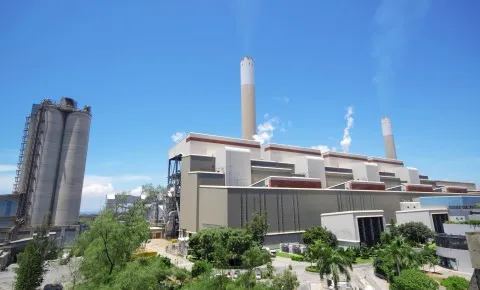
China's wind, solar, hydro, nuke power capacity jumped by 66GW in 2015
Will the growth of coal-fired power plants budge?
Wind, solar, hydro and nuclear capacity increased by a combined 66GW in 2015. With a modest FiT adjustment, Jeffrey Fong, Equity Analyst at Jefferies Hong Kong, said he expects WTG and solar demand in China to remain healthy in 2016.
However, the delay in subsidy payments remain unresolved and the RPS unimplemented. Moreover, the worsening curtailment and the renewed expansion of coal-fired power plants suggest a lack of, or the inability to execute on, a cohesive national policy on pollution.
"The NEA expects 20GW of wind installments and 15GW of solar installments in 2016. We expect the four generation technologies to increase capacity by almost 300GW over the next five years. Assuming power demand grows by 1% out till 2020, thermal power generation would have fallen from ~75% in 2015 to ~61% in 2020," Fong said in his report.
Here's more from Jefferies Hong Kong:
With gas-fired power generation also set to gradually increase over the next five years, coal-fired power's generation will be even lower, helping alleviate China's air pollution and carbon emission.
Feed-in Tariff Adjustment for wind modest compared to the original proposal. The Wind FiT will be lowered from today's Rmb0.49-0.61/kWh to Rmb0.47-0.60/ kWh for projects in 2016 and lowered to Rmb0.44-0.58/kWh in 2018. For solar, the magnitude of the FiT adjustment in Zone I and II was higher than expected. The Solar FiT in Zone I and II will be lowered by Rmb0.10/kWh and Rmb0.07/kWh, respectively, while the FiT in Zone III will be lowered by a modest Rmb0.02/kWh. We believe the system costs would need to decline by ~4% and 6%-14% for wind and solar, respectively, to account for the decline in FiT.
Given the modest change in FiT, we expect WTG and solar demand to remain healthy. According to CHST and Goldwind, their order books are strong and there has been no indication there will be a delay in deliveries. CHST expects WTG gearbox sales to reach 17GW in 2016, from the 2015 target of 14.5GW; admittedly, it will be partially driven by overseas sales.
The Renewable Energy Surcharge was raised to Rmb0.019/kWh from Rmb0.015/ kWh at the end of 2015. We believe the government will need to increase the renewable energy surcharge again though. More importantly, the government has yet to announce the sixth batch of projects to be included in the subsidy catalog. The majority of projects completed in the last two years have yet to receive the necessary subsidies.
Project developers will need to either lower their expansion plans or come back to the market more aggressively; the latter will prove more difficult given the recent market volatility.
In addition, the year ended with nary a word on the Renewable Portfolio Standard. However, given the delay, we doubt the market had much expectations to begin with.
In a rush to capitalize on the completion of the UHV lines, wind farm developers have expanded aggressively in provinces such as Xinjiang where there are high wind speeds but inadequate grid infrastructure. The expansion has led curtailment to deteriorate across China. According to Longyuan, its curtailment has risen to 15% in 2015, from 10% in 2014. Longyuan new projects in 2015 were largely located in Ningxia (20%), Jiangsu (20%) and Guizhou (9%) where curtailment was limited. Admittedly, Inner Mongolia and Gansu accounted for 9% and 7% of Longyuan's new projects in 2015.
Combined with the renewed expansion of coal-fired power plants (40-year projects), it raises questions on the ability of SOE management to properly allocate capital. The willingness of provincial government to approve more coal-fired power plants seemingly contradicts the national government's push to lower coal consumption.
Moreover, while the deterioration in air quality in November was partially driven by a colder winter, it raises the questions of whether the coal-fired power plants turned on their scrubbers and if more stringent emission standards should be applied. As to the latter, the power industry clearly has adequate capital



















 Advertise
Advertise







